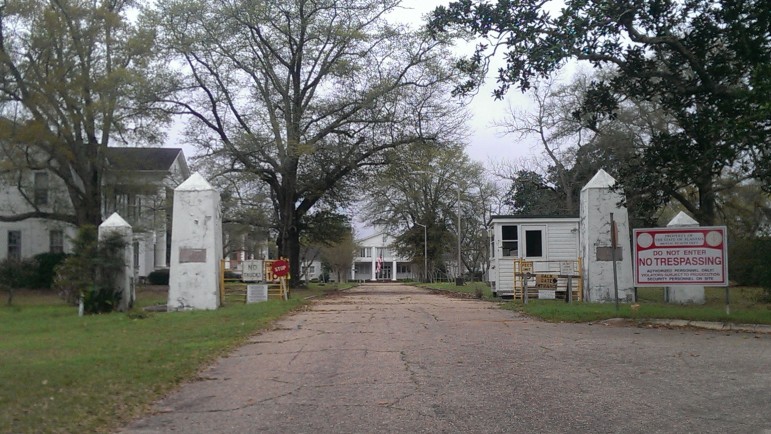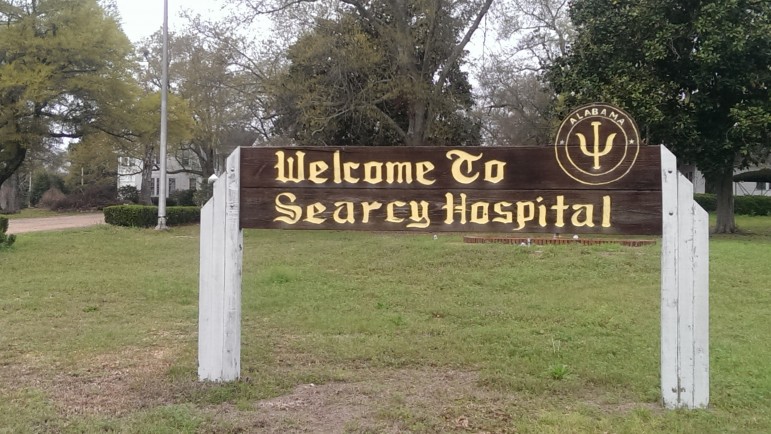Mt. Vernon Arsenal, Searcy Hospital Among Most Endangered Historic Places
The National Trust for Historic Preservation announced this week that Mt. Vernon Arsenal, which later became Searcy Hospital, is one of America’s 11 Most Endangered Historic Places for 2019.
The site is just outside of Mobile in the town of Mt. Vernon, Alabama. The arsenal was constructed in the 1830s and supplied military equipment to regimens in Alabama and West Florida. According to documents filed with the National Register of Historic Places, the Mt. Vernon Arsenal is one of just two surviving arsenals established during this time.
During the Civil War, Confederate soldiers seized the site and controlled it until the end of the war. The arsenal was then converted into barracks for the U.S. Army.
From 1887 through 1894, Mt. Vernon housed Native American prisoners of war, including the Apache leader Geronimo. These prisoners lived in constructed villages on the grounds of Mt. Vernon. Many of them were later moved to Fort Sill, Oklahoma.
In the early 1900’s, Alabama converted the buildings at Mt. Vernon into a state psychiatric hospital for black patients, which was later renamed Searcy Hospital. When it first opened, Searcy reportedly employed one doctor to treat more than 300 patients. The hospital was eventually integrated in 1969 and remained open until 2012.
Since Searcy Hospital closed, the site has remained vacant. Often referred to as the Mt. Vernon Arsenal/Searcy Complex, the area includes over 30 buildings, which are owned by the Alabama Department of Mental Health. Tiffany Tolbert, a senior field officer with the National Trust for Historic Preservation, says the historic location is at risk of falling apart.
“The structures on the site are deteriorating and it is in need of a preservation plan and revitalization,” Tolbert says.
The Mt. Vernon Historical Society, a local group in Mt. Vernon, has worked to preserve part of the site. Tolbert says adding the location to the national list of endangered historic places may help encourage state leaders to take further action.
Breaking down Alabama’s CHOOSE Act
It’s been a year since Alabama legislators passed the CHOOSE Act allowing families to apply for state funds to use towards homeschool expenses and tuition for participating private schools. The Alabama Daily News’ education reporter Trisha Powell Crain has been diving into how the funds are being used. WBHM’s Andrew Gelderman sat down with her to talk about what we’re seeing so far.
Huntsville is growing fast. Here’s how it’s stayed affordable
Home prices are rising in Huntsville, but so far, the city’s avoided the skyrocketing costs in other boom towns.
What are your unique holiday traditions? NPR wants to know
The holiday season is full of traditions and we all celebrate them a bit differently. NPR wants to your most unique holiday traditions. What makes celebrating this time of year feel special for you?
What are your unique holiday traditions? NPR wants to know
The holiday season is full of traditions and we all celebrate them a bit differently. NPR wants to your most unique holiday traditions. What makes celebrating this time of year feel special for you?
3 culinary tricks that might get you to eat more veggies, according to chef Roy Choi
Chef Roy Choi, known for his Korean-Mexican fusion food trucks, focuses on veggie-forward dishes in a new cookbook. He shares techniques to get you excited about your greens, plus 3 flavorful sauces.
3 culinary tricks that might get you to eat more veggies, according to chef Roy Choi
Chef Roy Choi, known for his Korean-Mexican fusion food trucks, focuses on veggie-forward dishes in a new cookbook. He shares techniques to get you excited about your greens, plus 3 flavorful sauces.










